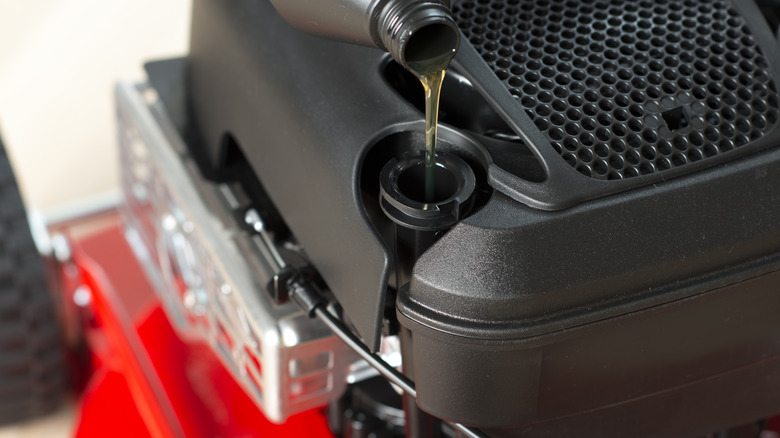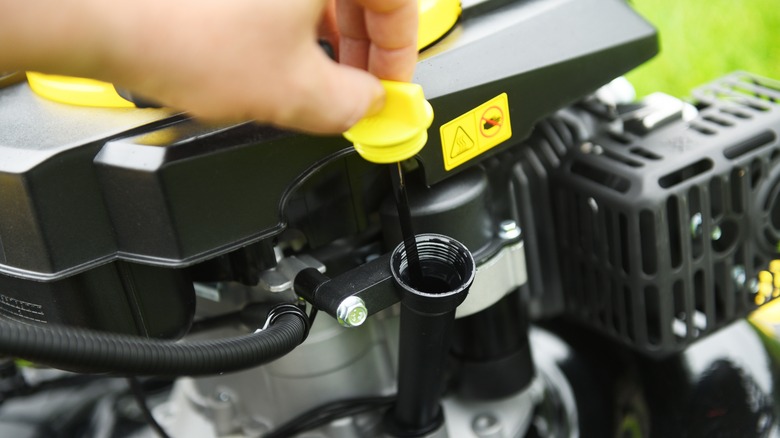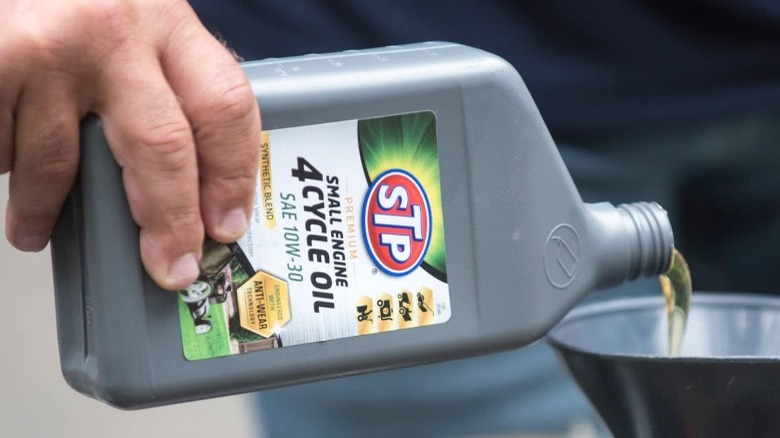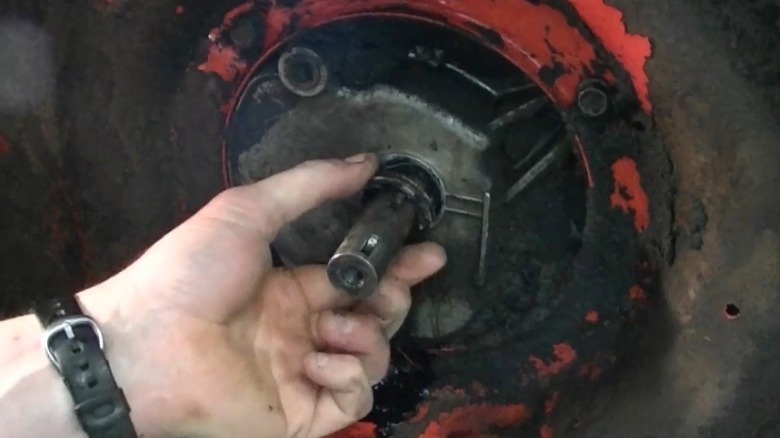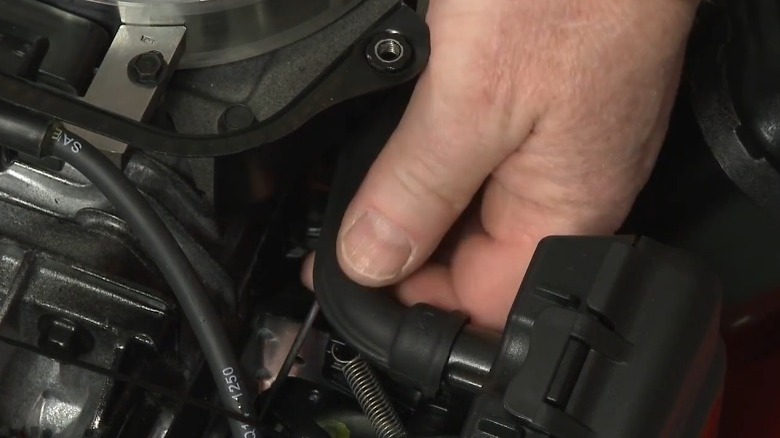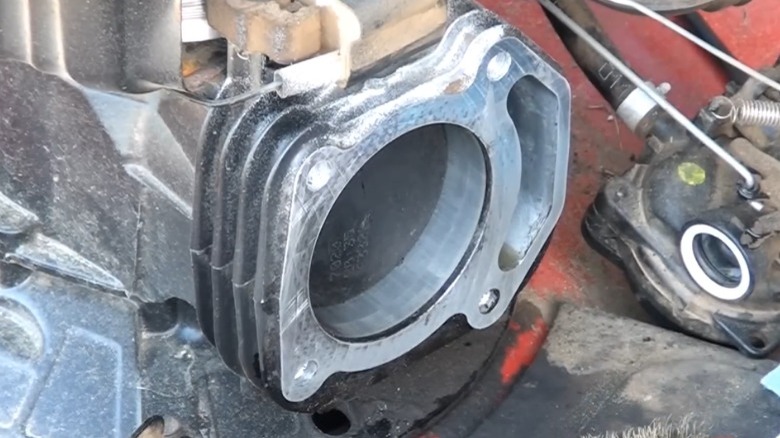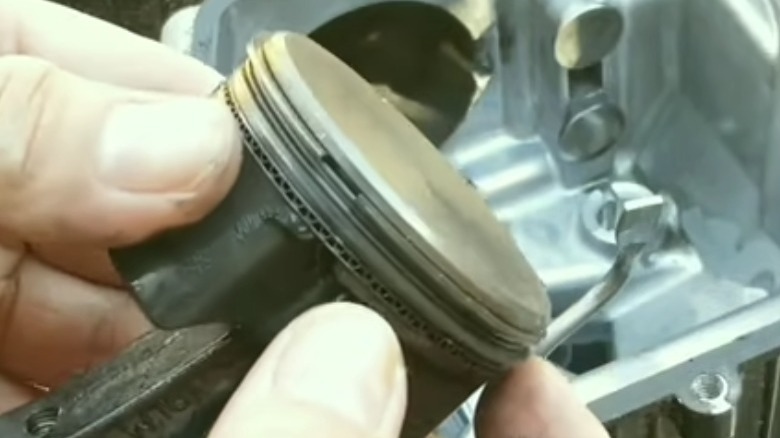What Causes White Smoke From A Lawn Mower (And Fixes To Try)
We may receive a commission on purchases made from links.
You pull the ripcord on your lawnmower and everything starts out fine. The engine roars to life and the blades start spinning. Then, all of a sudden, thick white smoke starts billowing out of the mower. Quality gas-powered lawnmowers aren't cheap machines and it can be more than a little startling when something like this happens. Don't panic though, there are a lot of different things that can cause this. And while a couple of them might mean that your lawnmower's engine is in for some serious maintenance, most of the time it's fairly simple to fix.
White (and sometimes blue) smoke issuing from your mower can usually be attributed to burning oil. This thick, pungent, and pearly white smoke is easily identifiable from the thin exhaust that you would usually get from your motor's normal operation. There are a number of different reasons why this might be happening, ranging from the angle you're mowing at to a worn-out cylinder or piston rings. Some of them might require in-depth maintenance while others won't even require you to crack open a toolbox. These problems can occur with even the most reliable push mowers, so it's good to know how to diagnose it and a few potential solutions.
Spilled oil
One of the most common reasons why you might see white smoke issuing from your mower is that oil was spilled the last time it was changed. This is a regular enough occurrence for any gas engine, but it's even more frequent in small engines that have a smaller oil portal, being easier to miss with an overfull quart jug.
The good news is that it's an easy fix. Simply wait for the engine to cool, then take a rag and wipe away any excess oil on the engine casing. Take particular care to look for areas where the oil may have pooled. Once you've gotten as much of the oil off as you can, take a hose and a small amount of degreasing agent (such as dish soap) and wash the engine casing to get rid of any residual residue. Once you're done, you'll want to make sure that the mower is completely dry before attempting to use it again. Using a funnel during future oil changes can help to prevent this problem from happening again.
Not all oil spills are from improper maintenance, though. Oil can also escape its designated pathways when the mower is used or stored at an improper angle. This usually happens when a mower is stored on its side, but it can also occur when mowing terrain with an incline in excess of 15-degrees. The cleaning method is the same, but your engine may need further maintenance if the problem persists.
Overfilled oil
Another practice that can cause your mower to go up in smoke is overfilling the oil. This can happen if you don't fully drain the old oil during a change, or if you simply add too much new oil. The excess oil will lead to increased pressure which can reduce engine performance, damage gears and seals, increase aeration and foaming, and often result in leaking. In the worst cases, the excess pressure can even damage the crankshaft and lead to engine failure. Once the oil has escaped from its designated channels, it will often get onto the engine where it will heat up and start to smoke.
This is another easy fix though. You simply need to drain the oil from the mower and refill it with the appropriate amount. The correct amount (and type) of oil that your lawnmower takes should be listed in your owner's manual. If you've lost or misplaced your manual, you should check to see if you can find a digital version on the manufacturer's website. Most major lawnmower brands will have this available. Honda, for instance, has all of their mower's manuals available as PDFs that you can download for free. If the oil continues to leak after draining and changing it, then it's possible that you already have a damaged seal.
The wrong kind of oil
Another common mistake that people make when changing oil is that the correct amount of oil was used, but it was the wrong type. Oil comes in several different grades of viscosity. "The viscosity grade of engine oil provides information on the oil's resistance to flow inside the engine," says Total Energies. "A lubricant with a low viscosity grade will be more fluid, more liquid, and will flow more easily. Inversely, the higher the grade, the thicker the oil, slowing its flow to help form a protective film across engine parts. As engine oil is affected by temperature, its grade gives information on the use and flow of the lubricant when hot and cold."
Small engines, like those found in lawnmowers, tend to run much hotter than their automotive counterparts and so they require oil that will retain its viscosity and not break down during the prolonged exposure to higher heat. Specialty mower oils also often contain higher levels of zinc, which would damage the emission systems in cars, but provides anti-wear and anti-oxidizing qualities that help keep the oil functioning longer in a smaller engine. Check your manual to see what grade oil the manufacturer recommends. If the oil that you used previously was the wrong kind, drain it and replace it with the correct grade.
Damaged crank seal
Nearly all the metal housings in any given engine are connected with a series of fitted gaskets and rubber grommets. These seals prevent leakage from the points where the metal components connect, but they're significantly more fragile and prone to damage. It could be that having too much oil pressure damaged one of these seals, but they can also simply wear out over time. The repeated exposure to heat and the vibration of both a combustion engine and spinning blades can eventually lead to cracking and tearing.
If you're seeing white smoke, then the most likely culprit is the crankcase. This is the compartment in your engine where the crankshaft connects to your camshaft and a few other parts of your engine operate. There are a few things that can go wrong here, but one of the bigger ones is a leaky seal could be letting air in or oil out. Look at the bottom of your mower where the blade shaft meets the engine and check if the rubber seal is loose, has any visible cracks, or has oil on its surface. You will need to replace it if you notice any of these symptoms. To do this, you would need to remove the blade, and then use a pick or a similar tool to remove the seal at the bottom of the crankcase and replace it with a new one before re-assembly.
Faulty breather tube
Alternatively, you could have a faulty breather tube. The breather tube is a one-way check valve that relieves pressure in the crankcase caused by the change in volume when the piston moves inside the case. It's connected to a tube that leads from the outside of the crankcase to the air filter housing. When this tube and the attached valve are damaged or otherwise not working properly, pressure can build inside the case unchecked which can in turn lead to oil escaping the case and burning on the engine. Issues with the breather valve are tricky to diagnose, but replacement just requires the removal of a few bolts.
You will need to remove the cover on top of your mower and detach the gas tank in order to access the breather tube. You will then need to remove the old tube and attach the new one by inserting the tapered end of the tube into the crankshaft until it is fully flush and then attaching the other end to the air filter housing. Once that's done, you simply need to reassemble the removed parts and your engine should be able to relieve internal pressure in the crankcase normally again.
Blown head gasket
Leaking oil, low engine power, and white smoke are also symptoms of a blown head gasket. To diagnose this, you will need to carefully examine the seam between the cylinder head and cylinder block of the engine. Check for signs of oil leakage such as discoloration or black buildup. You can also use a fine feeler gauge to check the width of the gap and ensure that it is uniformly less than .001 inches wide around the entire perimeter of the seal. Signs of leakage and gaps in the seal are both indications that you have a blown head gasket. You can also try disconnecting the spark plug lead and pulling the motor ripcord three times to see if you can hear air escaping from inside the engine casing.
Fixing this will require you to completely remove the cylinder head and replace the gasket that fits between it and the cylinder block. There will be different steps involved depending on the make and model of your lawnmower, but it's nearly always a fairly complex procedure that you may not wish to take on if you aren't an experienced mechanic. If you aren't comfortably disassembling a portion of your mower's engine, then you may be better off either contacting the manufacturer if it's still under warranty or otherwise seek out a service center.
Worn-out or damaged cylinders or piston rings
The last thing that can cause your lawnmower to start producing white smoke is probably the most catastrophic. Worn-out or damaged cylinders or piston rings prevent the piston from forming a proper seal during combustion. This allows the heat from the cylinder to get around the piston inside the cylinder and into the crankcase where it makes contact with oil. If this is the case, then it's possible that you may need to replace the entire engine. Cylinders are usually damaged when there isn't enough lubrication. Running a mower when there isn't enough oil in it causes excessive heat and friction to build up during the combustion cycle, causing rapid damage to the entire assembly.
That said, debris in the cylinder, excessive heat, and even normal wear and tear can ultimately lead to your cylinders wearing out. When this happens, you may also notice a knocking sound and a marked decrease in your mower's power output. An experienced mechanic might be able to replace the piston rings if they were the only parts damaged, but repairs to damaged cylinders would often require the replacement of the entire cylinder block. That's costly, meticulous, and has a high risk of failure, which is why you may be better simply purchasing a short block that has all the moving parts pre-installed or else installing an entirely new engine altogether.

